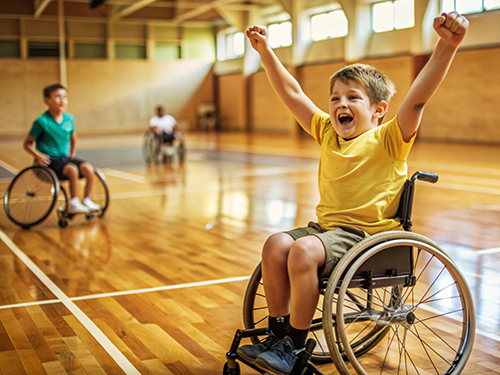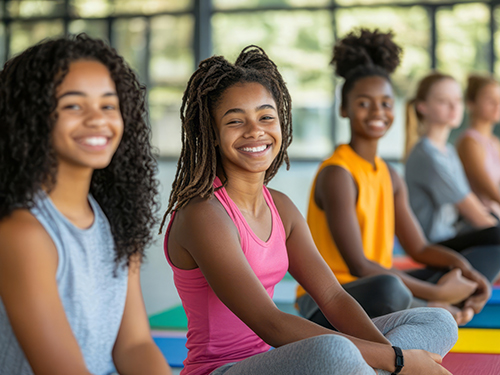
Fact Sheet FS1367
Physical activity plays a critical role in promoting the overall well-being of adolescents, contributing to both physical and mental health. Studies show that regular physical activity reduces the risk of chronic health conditions such as heart disease, obesity, and Type II diabetes, while also boosting mental health, cognitive function, and academic performance. However, despite these benefits, less than one-quarter (24%) of children aged 6 to 17 in the U.S. meet the recommended 60 minutes of moderate-to-vigorous physical activity every day. The increasing prevalence of sedentary behaviors, driven by social media, video gaming, and academic pressures, exacerbates this issue.
This fact sheet provides practical strategies for caregivers, educators, and teens to promote physical activity. It offers actionable tips on incorporating movement into daily routines, balancing screen time, and engaging in enjoyable physical activities. By creating a supportive environment, we can help foster healthier, more active lifestyles for adolescents, supporting long-term well-being.
The Importance of Physical Activity for Teenagers
The U.S. Department of Health and Human Services recommends that children and adolescents aged 6 to 17 engage in at least 60 minutes of moderate-to-vigorous physical activity every day. This should include a combination of aerobic activities, muscle-strengthening activities, and bone-strengthening activities. These activities are essential for maintaining overall health and fitness, improving mood, and enhancing academic performance. Incorporating all three types of activities into your teen's weekly routine will help ensure they maintain balanced physical health and establish a long-term well-being.Examples of Different Types of Physical Activity
The Current Physical Activity Gap and Consequences of Physical Inactivity
Despite the clear benefits, physical inactivity is a growing concern for U.S. teens. In 2017, only 26.1% of high school students participated in at least 60 minutes of physical activity every day for a full week, and only 51.1% engaged in muscle-strengthening activities three or more days per week. The current fast-paced and high-pressure lifestyle, including heavy screen time and academic demands, makes it harder for teens to stay active and develop healthy habits. Physical inactivity in adolescence can lead to significant health issues such as obesity, cardiovascular disease, diabetes, and reduced bone density. Additionally, it can contribute to poor mental health, increased stress, and lower self-esteem. Encouraging physical activity can help mitigate these risks and improve overall well-being.
Practical Strategies to Promote Physical Activity
For Caregivers and Educators
Caregivers and educators play a vital role in helping teens stay active. Here are four strategies to encourage movement:
For Teens
Teens should take initiative in finding activities that they enjoy. Here are six tips for staying active:
Positive Language and Technology's Role in Promoting Activity
The language used around physical activity can influence teens' attitudes toward exercise. It is important to use positive and supportive language that focuses on the benefits of physical activity, such as increased energy, improved mood, and better focus. Avoid framing exercise in terms of appearance or weight loss, as this can foster negative associations with movement.
Using Technology to Encourage Physical Activity
Technology can be a helpful tool in engaging teens in physical activity. Here are some ways technology can promote movement:
Key Takeaways
- Encouragement is key: Positive language and supportive environments help build a healthy relationship with physical activity.
- Make it fun: Encourage teens to engage in physical activities they enjoy and consider using technology to make it more enjoyable.
- Small steps lead to big results: Progress in physical activity does not happen overnight—encourage gradual improvements.
Resources for New Jersey Teens and Families
In New Jersey, there are a variety of outdoor spaces where teens can engage in physical activities such as hiking, biking, and playing sports. Here are four tips for finding open spaces and recreational resources:
References
April 2025
Copyright © 2025 Rutgers, The State University of New Jersey. All rights reserved.
For more information: njaes.rutgers.edu.
Cooperating Agencies: Rutgers, The State University of New Jersey, U.S. Department of Agriculture, and Boards of County Commissioners. Rutgers Cooperative Extension, a unit of the Rutgers New Jersey Agricultural Experiment Station, is an equal opportunity program provider and employer.



